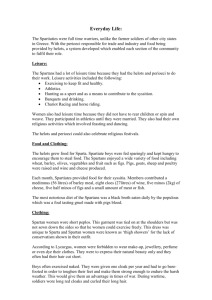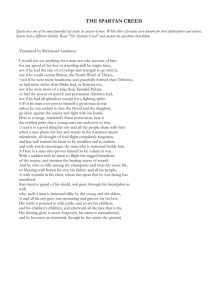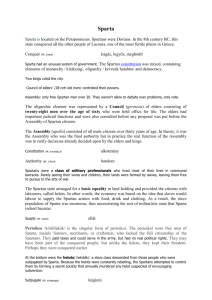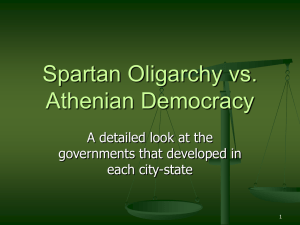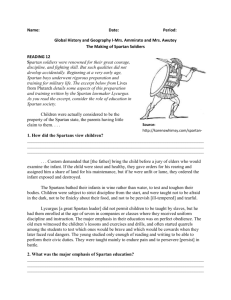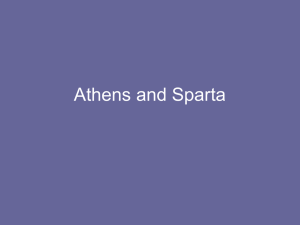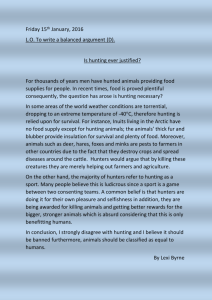File - 12 Ancient History
advertisement
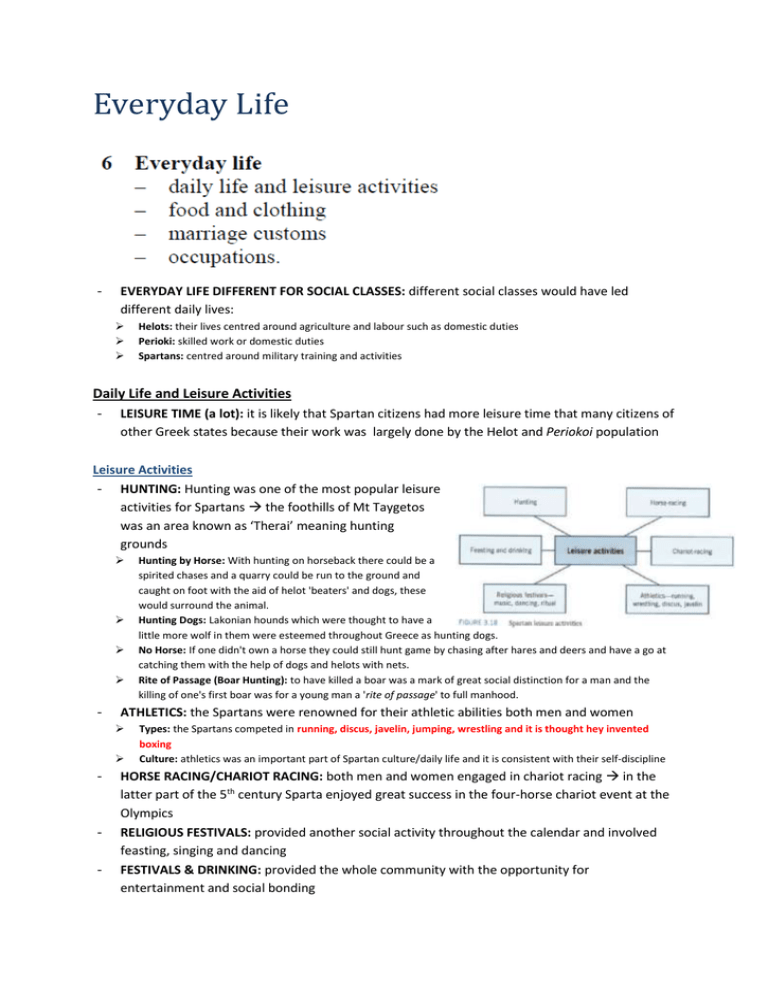
Everyday Life - EVERYDAY LIFE DIFFERENT FOR SOCIAL CLASSES: different social classes would have led different daily lives: Helots: their lives centred around agriculture and labour such as domestic duties Perioki: skilled work or domestic duties Spartans: centred around military training and activities Daily Life and Leisure Activities - LEISURE TIME (a lot): it is likely that Spartan citizens had more leisure time that many citizens of other Greek states because their work was largely done by the Helot and Periokoi population Leisure Activities - HUNTING: Hunting was one of the most popular leisure activities for Spartans the foothills of Mt Taygetos was an area known as ‘Therai’ meaning hunting grounds - ATHLETICS: the Spartans were renowned for their athletic abilities both men and women - - Hunting by Horse: With hunting on horseback there could be a spirited chases and a quarry could be run to the ground and caught on foot with the aid of helot 'beaters' and dogs, these would surround the animal. Hunting Dogs: Lakonian hounds which were thought to have a little more wolf in them were esteemed throughout Greece as hunting dogs. No Horse: If one didn't own a horse they could still hunt game by chasing after hares and deers and have a go at catching them with the help of dogs and helots with nets. Rite of Passage (Boar Hunting): to have killed a boar was a mark of great social distinction for a man and the killing of one's first boar was for a young man a 'rite of passage' to full manhood. Types: the Spartans competed in running, discus, javelin, jumping, wrestling and it is thought hey invented boxing Culture: athletics was an important part of Spartan culture/daily life and it is consistent with their self-discipline HORSE RACING/CHARIOT RACING: both men and women engaged in chariot racing in the latter part of the 5th century Sparta enjoyed great success in the four-horse chariot event at the Olympics RELIGIOUS FESTIVALS: provided another social activity throughout the calendar and involved feasting, singing and dancing FESTIVALS & DRINKING: provided the whole community with the opportunity for entertainment and social bonding Food and Clothing Food - NUTRITIOUS/BASIC: the Spartan diet was nutritious but basic the Sysstia were emant to ensure that all Spartans had the same food - AGRICULTURE (food): Sparta was a productive agricultural region their diet consisted of: Crops: included grains such as wheat and barley Fruit: such as figs and grapes used to make wine Meat: from sheep and goats game was also eaten Dairy products: made from the milk of goats and sheep such as Cheese Pigs Blood: soup given during the agoge Other: included honey from local hives and olives and olive oil Clothing - SIMPLE: garments were simple, functional and homemade - MEN: the types of dress included - WOMEN: the type of dress included: - Hoplite Dress: Spartan soldiers wore, Crimson tunics and cloaks, as symbols of wealth and power, helmets, breastplate, leg greaves. They carried a spear, and a shield. Spartan Men: Normal people wore plain or brightly coloured and patterned coloured tunics, with leather sandals. Forbidden: were expressly forbidden to wear make-up, jewellery, perfume or dye clothes Peplos: the main garment was a short revealing Peplos/tunic fasted on the shoulders it was not sewn down the side and allowed he women to move freely and exercise Leather Sandals: also worse leather sandals YOUTHS: were limited to wearing one garment a year RELIGIOUS CEREMONIES: the dress for religious ceremonies was more formal Marriage Customs - AGE: marriage in Sparta was for procreation instead of Romance the couples were married a lot older compared to other parts of Greece: - ARRANGED: evidence suggests that arrangements were made between families, although some rituals were secretive dowries and consideration in wealth were of some importance MARRIAGE BY CAPTURE: by which a man chose his bride and carried her off was a symbolic act OTHER RITUALS: the Spartan marriage ceremony rituals were as follows: - - Men: 20--30 Women: 18 when they were fully matured instead of 13 like in Athens Hair Clipped: she first shaved her head to the scalp Dressed in Men’s Clothing: then dressed in a man’s cloak and sandals Bridegroom Slips Away from barracks: after having dinner in the messes he slipped away in the darkness he entered the darkened room and consummated the marriage then depart back to the barracks PRE NUPTIAL WEDDING FEAST: it is thought that some sort of pre-nuptial wedding feast took place among the women only i.e. cakes in the shapes of breasts were eaten and a hymn ‘Partheneion’ was sung by young girls SECRET: the ceremony was kept secret until a child was produced if the wife was barren a new marriage contract could be arranged Occupations - SPARTIATES: were full time soldiers a small number filled various roles of government officials HELOTS: they were agricultural workers, domestic servants and nurses for families of Spartinates PERIOKOI: were the crafts workers, manufacturers, fishermen and traders
